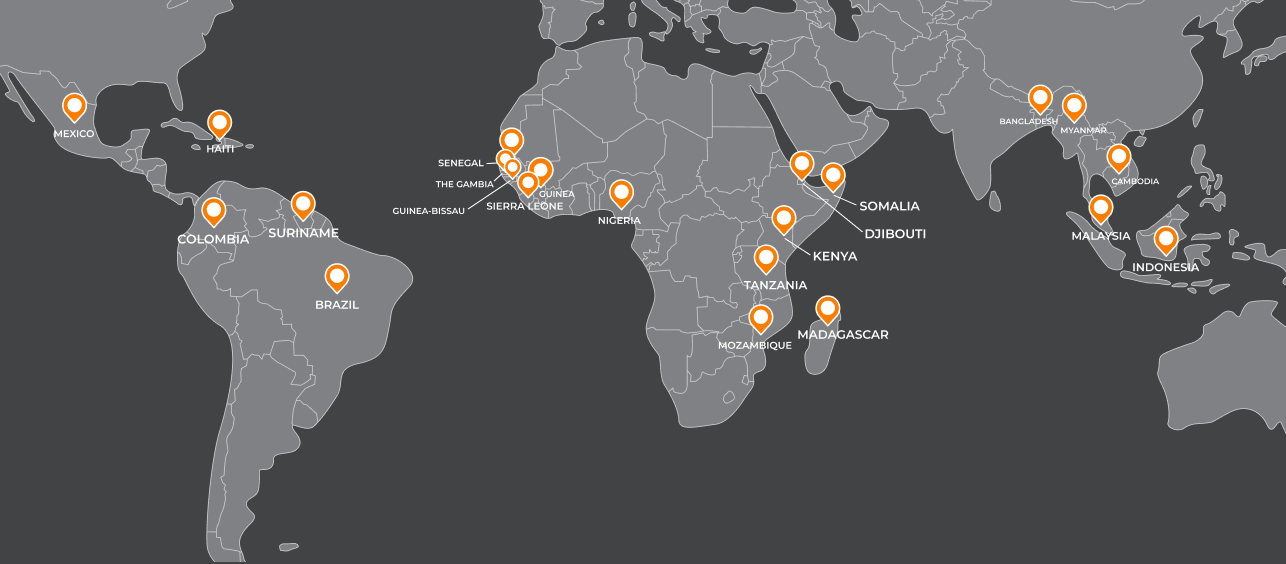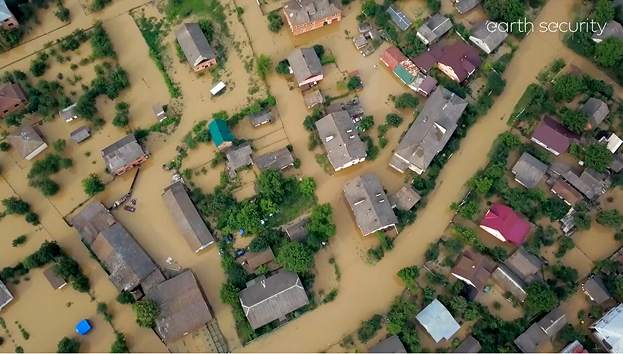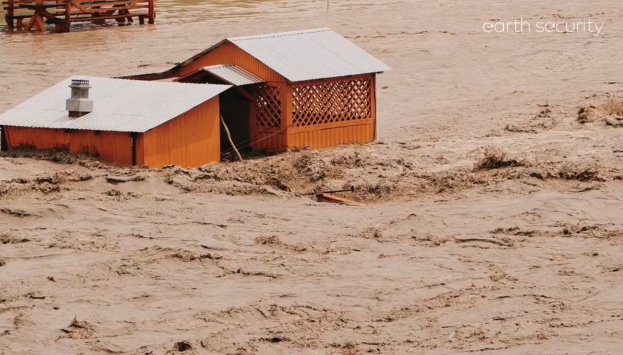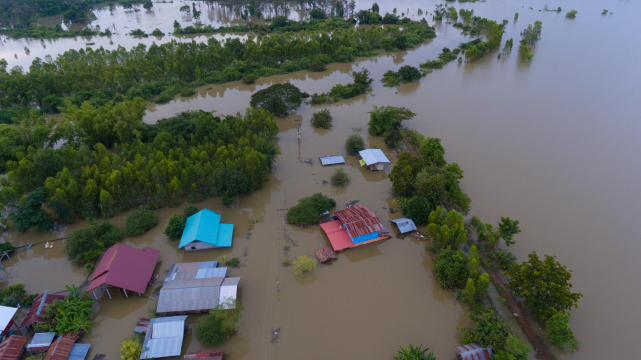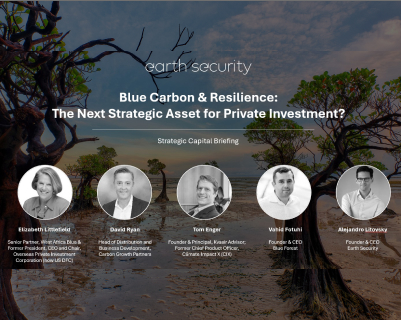This article was written by Emmy Hawker at ESG Investor.
4 January 2023.
A World of Opportunity
As investors look to make a positive impact at the nexus of the climate and biodiversity crises, nature-based solutions cover a broader range than is widely understood.
In December, COP15 underlined the international consensus that limiting global warming to 1.5°C by 2050 is impossible without accelerated action to protect and renew the world’s natural ecosystems and biodiversity.
As net zero strategies are taking shape and being implemented, governments, investors and companies are enlisting the natural world in the battle to combat the most catastrophic effects of climate change.
Ranging from restoring previously deforested areas, to establishing more sustainable agricultural practices and strategically planting mangroves to protect against flooding, nature-based solutions (NbS) will be a core environmental theme this year,
“As the ‘solutions’ part suggests, NbS means getting natural ecosystems to play a role in our human-driven development models in ways that increase climate resilience and provide additional [social] benefits,” says Alejandro Litovsky, Founder and CEO of Earth Security, a specialist in climate and nature-based asset solutions.
And institutional investors are “ideally primed” to upscale NbS globally, he adds.
Currently, US$154 billion a year is invested in NbS, according to the United Nations’ recent State of Finance for Nature report.
But this is “pocket money” compared to the US$44 trillion of global GDP dependent on well-functioning ecosystems, according to the UN Environment Programme’s (UNEP) Climate Finance Unit (CFU).
The private sector only provides 17% of current NbS investment flows, the report added, noting that this will need to increase “by several orders of magnitude” to contribute to the needed US$384 billion a year by 2025 and US$484 billion by 2030.
There is reason for cautious optimism in 2023, as the conditions emerge to propel NbS up the agendas of stakeholders globally.
“We are now seeing more investors interested in NbS,” says Ding Li, Head of Strategy at environmental consultancy Longevity Partners, who expects increased investment to “accelerate the establishment of a more robust market mechanism to fund, measure and benchmark NbS projects”.
Sticks and carrots
As well as regulatory ‘sticks’ calling for greater transparency of nature-related risks and impacts, “the emergence of more stable, predictable” voluntary carbon markets (VCMs) will serve as ‘carrots’ attracting investment in NbS in 2023, said UNEP CFU.
Home to 80% of the world’s terrestrial biodiversity, forests are among the world’s largest natural carbon sinks. Reforestation-focused solutions are generating credible, high-quality carbon credits which are being accessed by investors via VCMs, which enable the offsetting of emissions not covered by regulated markets.
“Monetising the global benefits of carbon stores in forests and other natural carbon sinks not only helps to address climate change, but also more fairly balances the costs and benefits of formerly unpriced externalities stemming from industrialisation and global trade,” says Richard Manley, Chief Sustainability Officer of Canadian Pension Plan Investments Board (CPP Investments).
The asset owner has partnered with NGO Conservation International to increase investment in VCM-listed NbS, launching the Accelerate Nature project in Peru’s 600,000-hectare Amarakaeri Communal Reserve (ACR), targeting an annual CO2 reduction of 220,000-330,000 metric tonnes.
As well as operating as carbon sinks, forests also support sustainable power production, such as hydroelectricity, according to an Earth Security report.
More than half of the 980 hydropower dams currently operating in 25 countries are dependent on water generated by cloud forests, representing US$118 billion over a ten-year period.
The report identifies other ways in which NbS can be invested, as VCMs have a patchy track record when it comes to transparency and credibility, the report identifies other ways in which investors can channel capital to ensure cluod forests and hydropower energy sources are protected.
Earth Security outlines the opportunities to upscale NbS through sovereign debt, developing Cloud Forest Bonds to “fund the creation of new, long-term income streams from services provided by nature”. These would have three design options: new bond issuances, debt-swaps, and results-based financing instruments matched to the circumstances of each of the 25 countries.
Beyond forest borders
Of course, opportunities for nature- and climate positive investments stretch far beyond forest borders.
“Many investors and companies only associate NbS with forestry-based projects, which is a very limited understanding of the opportunities,” says Earth Security’s Litovsky. Investors interested in NbS can also consider soil restoration initiatives, livestock emissions reduction programmes, as well as mangrove and wetland restoration.
Carbon by Indigo in the US is helping local farmers adopt more regenerative farming practices to produce carbon credits, and the Northern Kenya Rangelands Project plans to remove and store 50 million tonnes of CO2 over the next 30 years by implementing sustainable grazing management over almost two million hectares of savannahs and grasslands in Kenya. There is also a place for NbS in city areas, with investment opportunities in the development of green roofs and green belts.
Increased investments in nature tech, too, can help to employ NbS at scale. India-based Boomitra enables farmers to grow their incomes by providing tools for tracking the carbon they remove through soil, Earthly builds 3D models to provide an assessment of NbS for investors, and Satelligence helps companies achieve net zero through sustainable agricultural production by tracking a product’s full lifecycle – to name but a few.
The positive social-related impacts of NbS are also far reaching, “helping local communities build resilience against the impacts of climate change and subsequently enhance food and water security and wellbeing,” says Longevity Partners’ Li.
A UNEP report published at COP15 noted that 20 million jobs could be created by investing in policies supporting NbS, adding to the 75 million people already employed in the NbS market. The vast majority of this workforce (96%) live in lower-middle income countries.
A direct example is Kenya’s Mikoko Pamoja project, through which workers planting mangroves earn an average annual salary of three million Kenyan shillings (US$25,000).
Underpinned by regulation
Efforts to upscale NbS-related investment opportunities must be underpinned by regulation, urges Li, to “ensure regional and international efforts in NbS are coherent”.
Progress is being made on the international stage.
NbS was mentioned for the first time in COP27’s final text, which acknowledged the importance of addressing the ongoing degradation of natural ecosystems as a means of limiting global warming.
The climate summit also saw the launch of the Enhancing Nature-based Solutions for an Accelerated Climate Transformation (ENACT) partnership, which aims to serve as a hub for governments and non-state actors to upscale NbS to mitigate the worst impacts of climate change.
But nature-focused investors mainly pinned their hopes on COP15 in Montreal.
The final text for the Global Biodiversity Framework (GBF) included commitments to protect natural ecosystems, use biodiversity more sustainably, and protect the rights of Indigenous communities.
Beyond the overarching pledge to protect 30% of the world’s land and water by 2030, Target 8 outlined the importance of minimising the impact of climate change and ocean acidification on biodiversity by upscaling NbS and other ecosystem-based approaches. Target 11 also included a commitment to restore, maintain and enhance nature’s contributions to people through NbS and ecosystem-based approaches.
“While the agreement is not legally binding, countries will be required to show their progress on meeting targets through national biodiversity plans,” notes Maya Ziswiler, CEO of the UBS Optimus Foundation, the asset manager’s grant-making foundation.
Further, Target 15 means reporting frameworks being developed by the Task Force on Nature-related Financial Disclosure (TNFD) and International Sustainability Standards Board (ISSB), which will cover nature-related risks and impacts, are highly likely to be adopted by jurisdictions. Following in the footsteps of the Taskforce on Climate-related Financial Disclosures (TCFD), now widely used to identify and reduce climate risks, these frameworks will require investors and companies to identify and manage their exposure to nature-related risks.
With the GBF leaving investors in no doubt as to the direction of travel on tackling biodiversity loss, the stage is set for NbS to support many of the agreement’s key objectives.
“There are communities all over the world that have been historic stewards of critical ecosystems that provide carbon and broader biodiversity benefits to our planet,” says CPP Investments’ Manley.
“As the value of these ecosystem services becomes clearer, NbS offers an opportunity for these communities to be compensated for preserving and upgrading these systems by creating a disincentive to pursue their deforestation, degradation or change of use. This offers a potentially powerful and enduring economic incentive to protect and nurture these important resources.”
Explore the reports
The Earth Security Index Reports provided in-depth analysis of critical themes across selected industries and market geographies, enabling investors to anticipate and respond to emerging global dynamics. Download and explore the full Earth Security Index reports:






